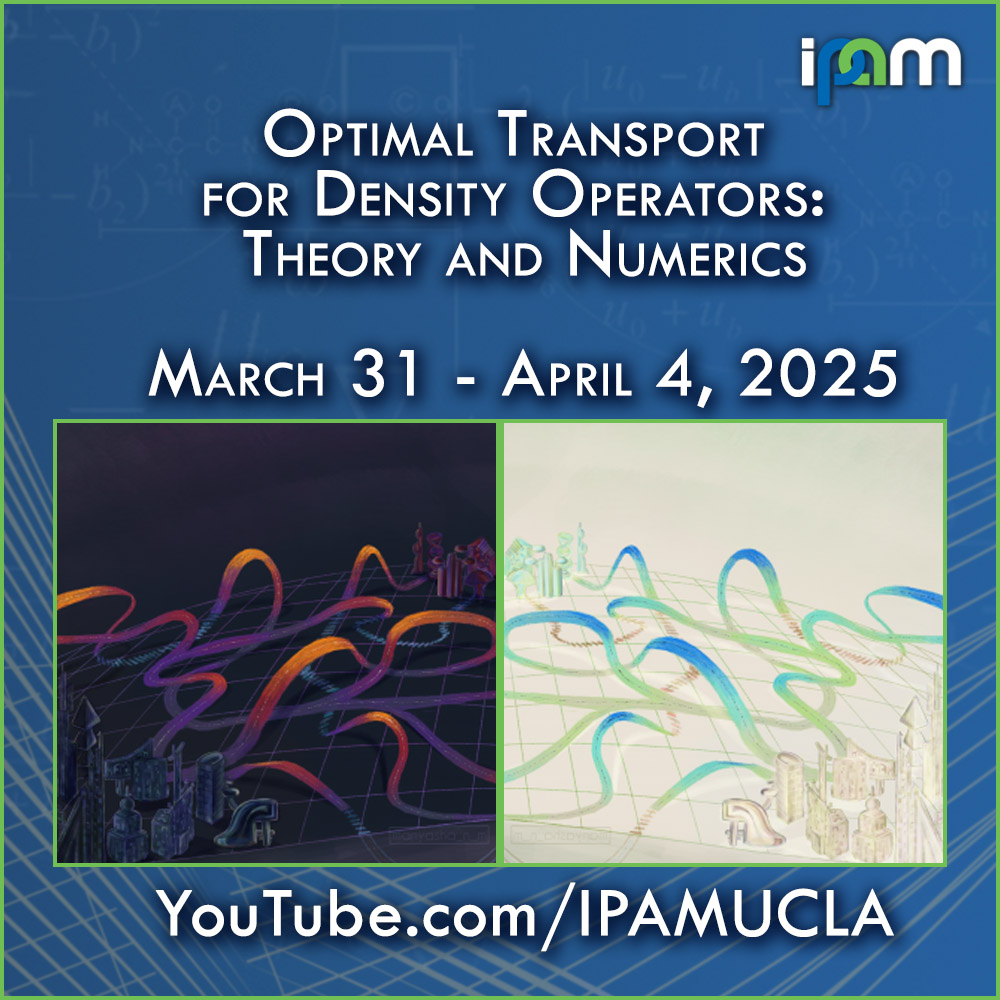Michele Pavanello - Learning functional theories of the 1- and 2-electron reduced density matrices
Presenter
April 1, 2025
Abstract
Recorded 01 April 2025. Michele Pavanello of Rutgers University-Newark presents "Learning functional theories of the 1- and 2-electron reduced density matrices" at IPAM's Optimal Transport for Density Operators: Theory and Numerics Workshop.
Abstract: Current quantum chemical models, while more robust and predictive than in past years, are often either too approximate to provide a faithful representation of reality or too computationally expensive to yield answers within a reasonable time. The talk introduces electronic structure models based on machine learning. It is argued that machine learning methods are best employed learning quantities rich in information, such as the electron density, density matrix or even the wavefunction, as these are inherently more useful than those targeting single quantities, such as energy, dipole, etc. We present models for the one-electron density matrix [1] of small to medium sized molecules. The crucial role of imposing N-representability conditions [2] is discussed. We also present methods to learn two-electron density matrices as a route for accounting for electronic correlation explicitly at low computational cost. The methods are available to the broader community as open-source Python implementations in the QMLearn software, http://qmlearn.rutgers.edu.
[1] Machine Learning Electronic Structure Methods Based On The One-Electron Reduced Density Matrix, X Shao, L Paetow, ME Tuckerman, M Pavanello, Nature Communications 14, 6281 (2023)
[2] Entropy is a good approximation to the electronic (static) correlation energy, JA Martinez B, X Shao, K Jiang, M Pavanello, The Journal of Chemical Physics 159 (19) (2023)
Learn more online at: https://www.ipam.ucla.edu/programs/workshops/workshop-i-optimal-transport-for-density-operators-theory-and-numerics/?tab=schedule
